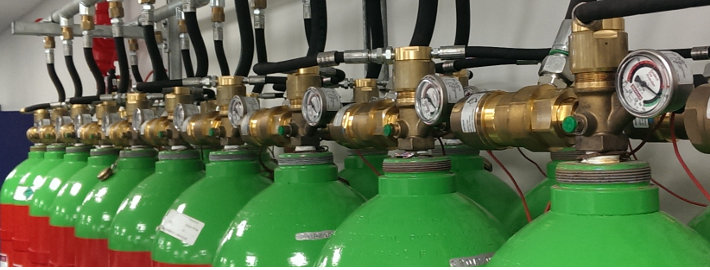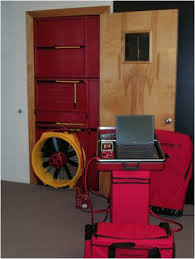
In rooms protected by gaseous fire suppression systems, room integrity testing is vital. A room integrity test checks the durability of the enclosure to retain an effective concentration of gas, which is critical to the safe operation of the system. It is normally carried out at commissioning, and annually thereafter.
Britannia Fire Technology provides room integrity testing to the required BS EN 15004-1 Standards. We have extensive experience of testing all types and sizes of enclosure, from server rooms in offices to large data halls in designated data centres.
In each case, we undertake the necessary calculations prior to the test, to deliver an immediate onsite result. In the event of failure, we locate and record air-leakage sites using localised smoke testing, if permitted. We provide a full and concise report usually within a few days of the test, incorporating all test data, air leakage diagnosis and certification.
We can also undertake the remedial sealing, often at the same time as the testing, in order to provide the most rapid solution.
 High leakage rates allow gaseous extinguishing agents to rapidly escape from an enclosure and result in the desired concentration of extinguishant only remaining in the enclosure for a short period.
High leakage rates allow gaseous extinguishing agents to rapidly escape from an enclosure and result in the desired concentration of extinguishant only remaining in the enclosure for a short period.
Integrity testing, which employs technology and techniques originally developed for use in the energy conservation field, has been recognized as an alternative method for testing the leakiness of enclosures protected by gaseous extinguishants, which can then be sealed, and can also be used to measure the “total leakage area” of the enclosure. This is the sum of the areas of all the individual cracks and openings through which air (and hence gaseous agents) will pass into or out from an enclosure. Working under the auspices of the National Fire Protection Association (NFPA) in the United States, a number of researchers in the field have developed retention prediction formulae which use measurements from fan pressurization tests to predict agent retention times.
The door fan unit is fitted into an existing doorway by means of an adjustable frame, and is used to both pressurized and de-pressurized the protected room with a known quantity of air. The pressure difference simulates the pressure given by the agent / air interface within the protected room. A computer programme is then used to calculate an equivalent leakage area (ELA) that represents the total area of all of the leakage sites within the protected area.
Subsequent modifications to the enclosure and its contents, such as installing additional cables, will tend to increase the leakage of a protected enclosure. Hence it is essential to ensure that the remedial sealing works are undertaken.
It is recommended that repeat integrity testing be carried out one year after the enclosure has passed to ensure that a satisfactory level of enclosure integrity is maintained in the enclosure, as recommended in BS EN 15004-1 and the BFPSA Code of Practice for Gaseous Fire Fighting Systems.

